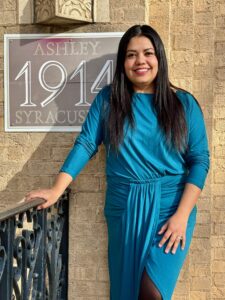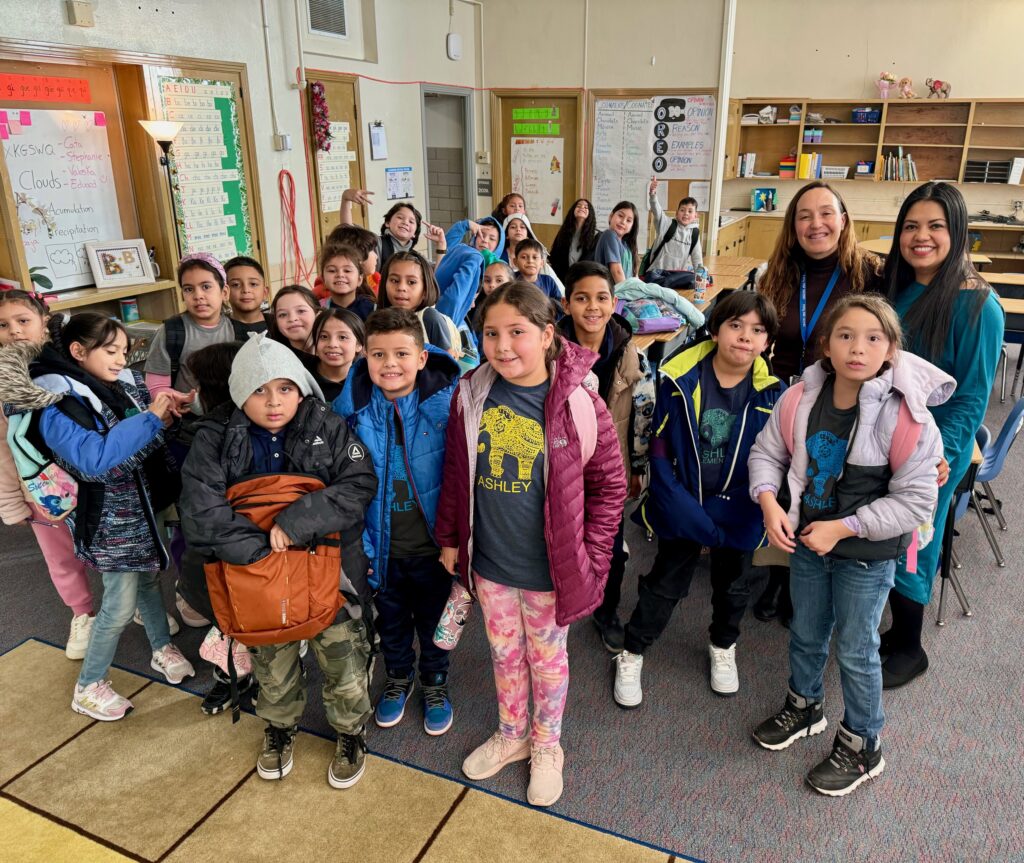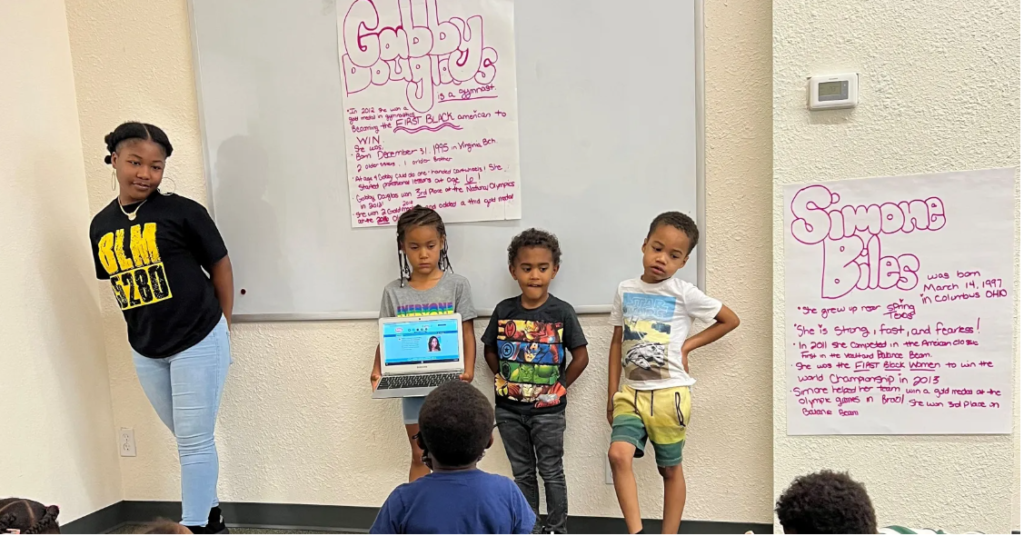(Cover photo: Third grade class at Ashley with teacher Beatriz Ramos-Hera and Interim Principal Janet Estrada. Photo by: Chris Broderick)
Few places in Denver illustrate the impact of the flood of migrant families as Ashley Elementary.
Enrollment at the school at East Montview Boulevard and Syracuse Street soared from 210 students who started school last fall to 404 this month, driven primarily by migrant students from Venezuela, Mexico, Columbia and other Central and South America countries.
“It’s taken us awhile to catch up,” said Interim Principal Janet Estrada. “The most challenging part is knowing that we are trying our best and doing our best, but at the end of the day, it’s still not enough.”
Unlike other area schools, Ashley is designated by Denver Public Schools as having staff and programs that offer instruction in Spanish from pre-kindergarten through fifth grade. That continues to draw families as Ashley enrolls new students virtually every week.
With more than 36,000 migrants and refugees arriving in Denver during the past year – many put on buses at the U.S.-Mexico border by Texas — Mayor Mike Johnston has gone to Washington, D.C. to plead for more federal help to relocate these families in housing, obtain accelerated work permits and other assistance.
A visit to Ashley shows the ripple effect, with its big classes, bustling hallways, nonstop playground soccer and staff hustling to adapt to all the new arrivals.
“Almost every single classroom has a spectrum of needs,” Estrada said. “A handful of students who have never been in a school are now here in first grade. We have students in fourth and fifth grade who are working on single-digit addition. We have students who are learning their own (Spanish) language for the first time.”

The school has two types of classroom settings for English-language and Spanish-language students. The student-teacher ratios in the Spanish-language classes are 34-to-1 in kindergarten and fifth grade, 35-to-1 in second grade and more than 30- to-1 in third and fourth grades, with two first grade classes at 27- and 28-to-1. The English-language classes serving neighborhood kids, by contrast, have 18-to-1 in kindergarten and 14-to-1 in first grade.
Karina Meraz-Lozano teaches 34 second graders in her classroom. This is her first year at Ashley and first year in the United States after being recruited by DPS from Mexico.
“I never had that many students (in Mexico),” she said. “I was terrified at first to try to manage so many students.”
But with help from a classroom paraprofessional and other teachers and staff, she has been able to break the class into smaller groups that enable more personalized attention to her students.
“I first expected it to be chaos, but it hasn’t been … You have to be well organized, you have to do your best every day no matter what.”
Meraz-Lozano cited examples of a few students in the fall who were not motivated and unable to work independently. So she put them in small groups of similar skill levels and saw them progress quickly.
“Now they can work independently, and I told them, ‘Wow, I’m very proud of you. You can do this!’”
For Beatriz Ramos-Hera, who teaches 33 third graders in her second year at Ashley, her students are learning in both Spanish and English, and she also utilizes the small-group strategy to work individually with each student.
For example, during math time, she works with five or six students who have similar skill levels determined by data from their placement assessments, while her classroom paraprofessional and student teacher work separately with other small groups.
Beyond the classroom, she makes it a priority to connect with their families who are adjusting to a new life in the United States.
“I try to have a close relationship with their families with regular communication,” she said. “They have my telephone number, and I want them to call with me with questions or problems.”
The state has provided additional funding for Ashley and other schools with a big influx of migrant students who arrived after the October enrollment counts that determine per-pupil funding. Ashley received $448,365 to add staff and resources, but that doesn’t cover the doubling of enrollment.
As a result, the Denver Public Schools Foundation, the Foundation for Sustainable Urban Communities, Central Park United Neighbors and others have stepped up with donations, volunteers and other support.
“It’s been amazing to see the outpouring from our community,” Estrada said. “The community is invested in welcoming our new-to-the-country families and students, and that’s not always been the case in other communities.”
Ashley has challenges beyond the influx of migrant students. Most students are from low-income families, and reading and math proficiency has ranked the school in the lowest 20 percent statewide in prior years.
Estrada, in her first year as interim principal, has seen academic progress in recent months and continues to hire staff to help both neighborhood students and new arrivals as more funding becomes available.
“I see our challenges as opportunities for growth,” Estrada said. “It has created opportunities for our teachers and staff to be creative with space and classrooms, to collaborate to provide instructional support for every student … We are a welcoming environment. Our students are happy here.”
Note: As more students arrive, Ashley welcomes donations to provide additional classroom and school resources. Contact Peter Simons for more information at simonsp52@yahoo.com or Brian Weber at bweber@fsucommunities.org.
(Disclosure: The Foundation for Sustainable Urban Communities supports Central Park schools with grants.)




